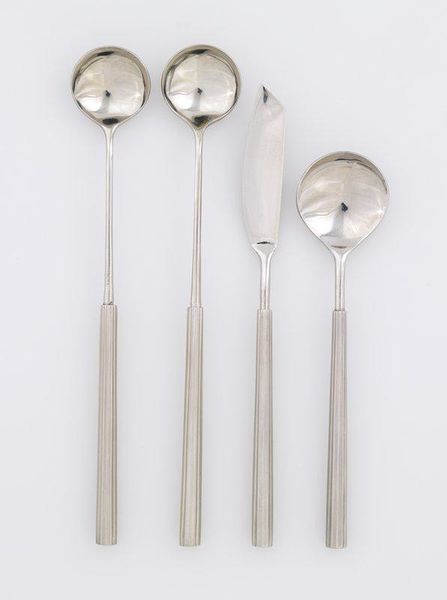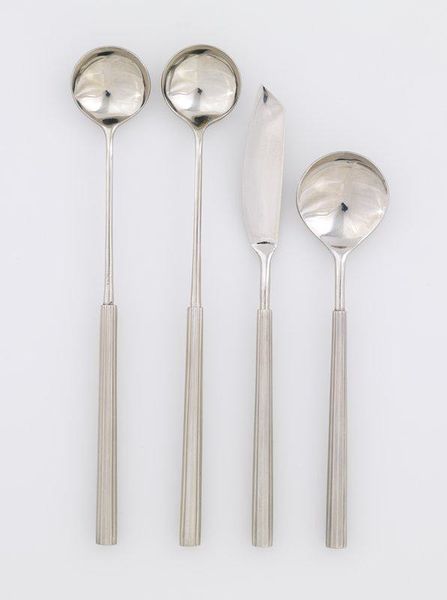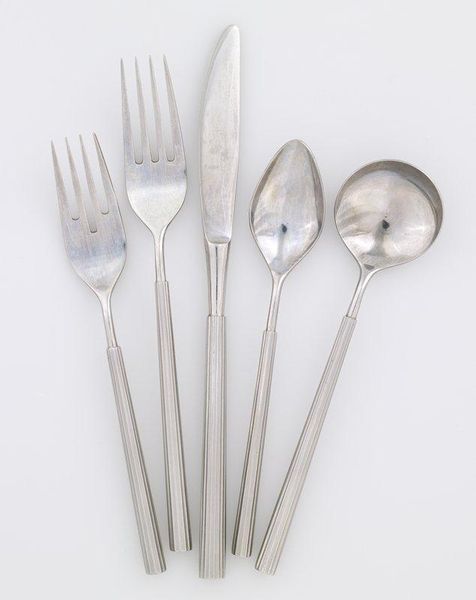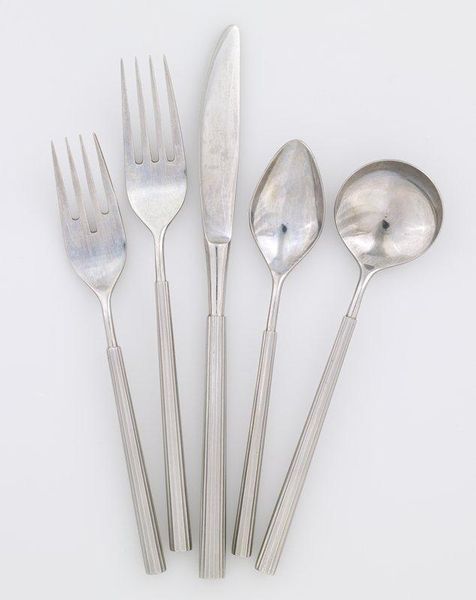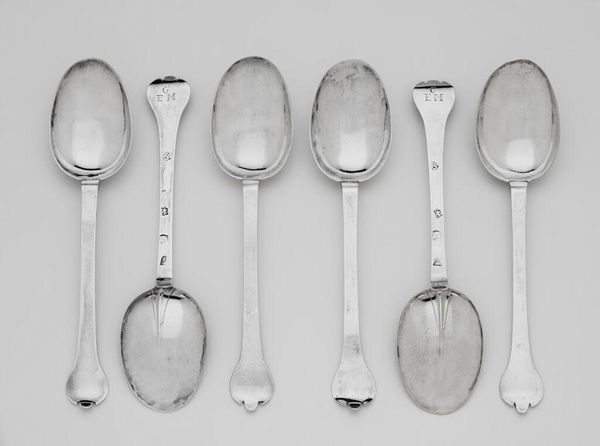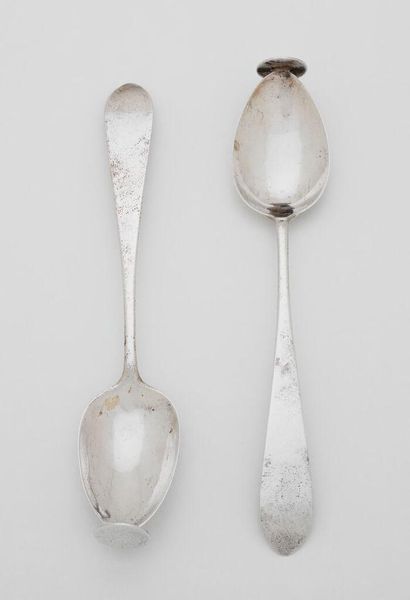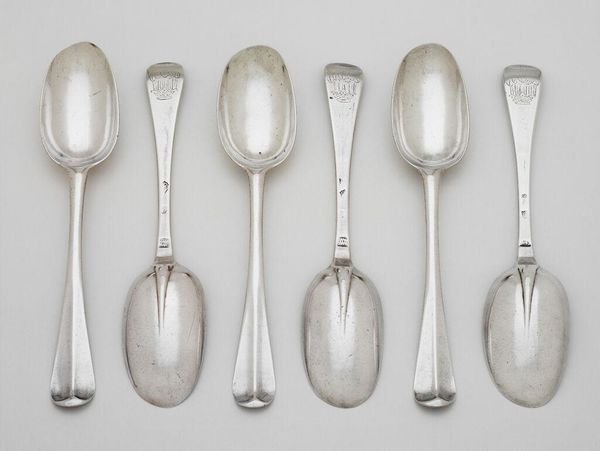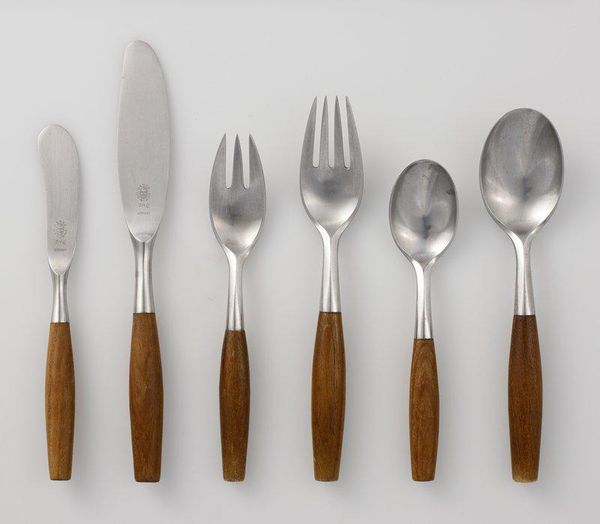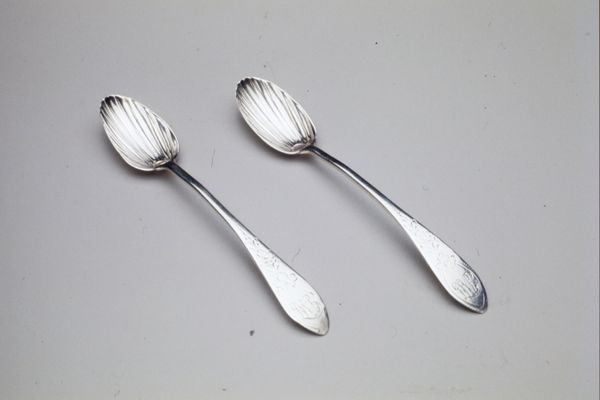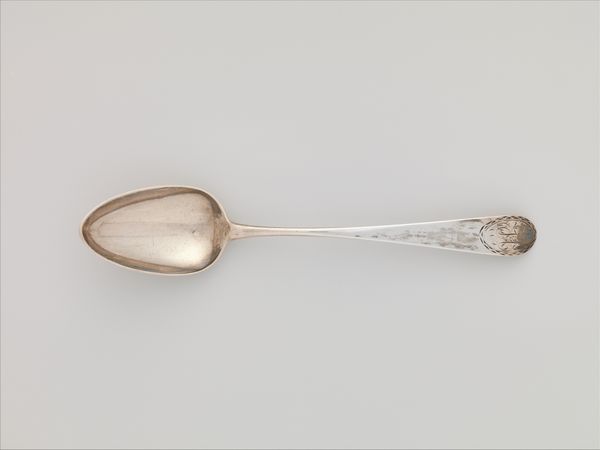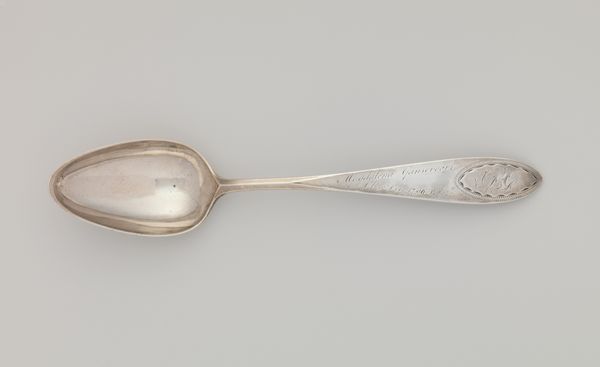
silver, metal, photography
#
studio photography
#
silver
#
metal
#
culinary art
#
photography
Dimensions: 7 1/2 x 1 1/8 in. (19.05 x 2.86 cm)
Copyright: No Known Copyright
Editor: This is Marion Weeber's "Iced Tea Spoon," created around 1965-1970 using silver and metal. The arrangement of the spoons and the single knife is stark and striking. They almost seem like figures standing in formation. What symbols do you see in these familiar objects elevated to art? Curator: The symbols here evoke ideas of ceremony and social rituals around food and drink. Silver, especially, carries a connotation of wealth and refinement, doesn’t it? These objects, particularly the spoon, become linked to shared memories and personal experiences, suggesting comfort, hospitality, and even social status depending on the viewer’s experience. How do the fluted handles strike you? Editor: They remind me of columns in a classical building. They give an otherwise functional object an elevated, timeless quality. Does that tie into your interpretation? Curator: Precisely. Weeber borrows forms to imbue the mundane with cultural significance, echoing traditional symbols of status and permanence. Consider the symbolism of reflection here as well; the polished surfaces act as miniature mirrors. What emotions does that invoke? Editor: I hadn’t considered the reflective surface! That makes them more than tools; they are objects for contemplation, reflecting the user, perhaps inviting us to consider our relationship with food and social customs. Curator: Yes, precisely. The domestic sphere itself becomes a canvas laden with psychological weight and cultural memory. The tools used to host and nourish take on an outsized importance when recast this way. Editor: I appreciate your pointing out how such commonplace objects can hold deep cultural and personal meaning. It challenges me to reconsider how we interact with the items in our everyday lives. Curator: And I was reminded how seemingly simple design choices can tap into enduring human desires for comfort, status, and connection. Thank you for sharing your perspective!
Comments
minneapolisinstituteofart about 2 years ago
⋮
Marion Weeber was an independent American industrial designer who attended the progressive art school run by the Art Students League of New York. She worked for several prestigious firms including Cartier, Ekco, and Samuel Kirk & Son, but eventually opened her own design firm in Manhattan in 1939. She holds over twenty-five patents for her innovative and inventive designs. "Classic Column" is perhaps the most storied of Weeber's fifty-plus flatware designs. It was selected by the U.S. Commission for Design Excellence for the American Pavilion at the 1967 International and Universal Exposition in Montreal. Precise and polished geometric forms reflect an American industrial aesthetic, exemplifying the forward-looking image the United States wished to present to the world.
Join the conversation
Join millions of artists and users on Artera today and experience the ultimate creative platform.
